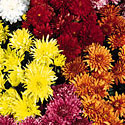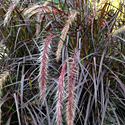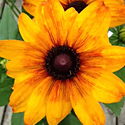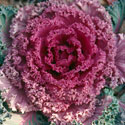 |
 |

 Shop Our Fantastic Fall Sale
Shop Our Fantastic Fall SaleFall is a great time to plant and save at Estabrook's!
ALL trees, shrubs, roses, perennials and groundcovers are now 30% OFF during our Fantastic Fall Sale.
Plus, with plenty of fresh plants still arriving (including many popular spring-blooming varieties), you won't be sifting through leftovers. Plant this fall and you'll be able to enjoy a terrific garden next spring while everyone else is planting theirs.
Here are just a few of the many plants now available in Yarmouth and Kennebunk:
 |
Hydrangeas A classic shrub for the Maine home landscape, hydrangeas offer big, bold blooms in pink, blue or white. Choose from many popular varieties including 'Endless Summer', 'Pinky Winky', 'Quick Fire' and more. |
 |
Ornamental Grasses Ornamental grasses are a great way to extend your garden's interest right up until winter. Offering gorgeous texture and tall habits that will sway gently in the breeze, they're a great (and underappreciated!) choice for any landscape. |
 |
Evergreens From large varieties that provide windbreaks and stately elegance to small selections that serve as garden ornamentals, evergreens have a place in any yard or garden and will provide color and texture all year long. |
* Fall items (mums, cabbage & kale, asters, etc. excluded)
 Let Us Do the Planting
Let Us Do the PlantingTake the hassles out of planting trees, shrubs, perennials & more with our Planting Service. We'll get your plants into the ground and off to a great start, worry-free. Visit our website to learn more. |
Designing Natural Plantings with Bulbs
 Spring flowering bulbs have arrived!
Spring flowering bulbs have arrived!Nothing is more enchanting than big drifts of flowering bulbs flowing through grassy areas or in lightly shaded woodlands. Although your bulbs won't bloom until next spring, you'll want to plant them now to ensure they have plenty of time to sprout.
We've put together these tips to help you give your plantings a more "natural" look:
Designing Your Plantings
Naturalized plantings should mimic nature and blend in with the existing landscape. To achieve this, lay out your planting areas so they follow the contours of your land and be generous with the size of the areas to be planted.
The impact of your planting will be much greater if you have several large areas of naturalized bulbs than if you have lots of small areas. Naturalized plantings look best when they are planted densely in the center then feather out to fewer bulbs at the edges of the planting. And finally, swaths of one solid color generally have greater visual appeal than drifts of mixed colors.
Location
The key to selecting a good location for naturalizing bulbs is finding an area that isn't mowed until after the foliage ripens or turns yellow. Ripening foliage feeds the underground bulb so it can store energy and nutrients needed to bloom next spring. Therefore, a manicured front lawn may not be the best place for a naturalized planting. However, an area underneath deciduous trees, in grassy meadows, gracing a hill, or brightening a woodland would be perfect.
Planting and Care
Please refer to the planting depth and spacing listed on the box or tear-off tags of your bulbs. You can also refer to the Bulb Advice section of our website for this information.
Once the bulbs are planted, you can help them put on a great show year after year by applying slow-release fertilizer as a top dressing after planting and each fall thereafter. Follow the label directions for application rates.
If, after 10 years or so, flowering slows down and the plants seem overgrown, dig the clumps, divide them and replant. You can use the extra bulbs to enlarge your naturalized areas or share them with friends.
|
|
|
|
 Dress up your home for autumn! These fall favorites are now available.  Garden Mums  Purple Fountain Grass  Echibeckia  Cabbage & Kale  Asters |
 Adding lime to your lawn will provide valuable nutrients and keep your grass healthy through the tough winter months. Protect your plants this winter with a fresh layer of mulch. No truck? No problem! We can deliver in bulk right to your door. |
 From the ultimate garden solution to perfect gifts, you're sure to find something great in our garden emporium!  Decorate for fall with all the beauty and none of the mess. Life-like fall artificial wreaths, sprays and more are now available.  Fill your feeders with gourmet seed from Wild Delight this fall to encouarge your backyard birds to stick around this winter |
